Table of contents
Vanilla extract (or natural vanilla essence) is a liquid, alcoholic extract from vanilla ( Vanilla planifolia). It contains about 35% ethanol and is sometimes mixed with a little sugar syrup.
Vanilla extract - Use in the kitchen:
What is vanilla extract? Pure, natural vanilla extract is obtained from real vanilla ( organic) using alcohol. By soaking it in alcohol, the aromatic substances contained in vanilla are extracted. Occasionally, a little sugar syrup is added to the vegan essence. Extract can be masculine or neuter: the or the extract are represented with approximately equal frequency.
Natural vanilla extract (organic) is used to refine desserts such as sauces, creams, puddings, glazes or ice creams. The vanilla essence also tastes good in pancakes, semolina pudding, cakes, cookies and in dressings or dips. Drinks such as tea, coffee, cocktails, liqueurs, jams and chocolate can be given a special touch with the intensive extract. Pure vanilla extract, with its strong aroma, also tastes good in savory dishes such as bean or other vegetable dishes as well as in cream soups.
Since vanilla extract is liquid, it is easy to flavor vegan nut drinks, fruit shakes, smoothies, fruit salads, nut cookies, fruit slices, fruit spreads, muesli or cocoa drinks.
Which substitute should you use for vanilla extract? The pulp of a whole vanilla pod or ½ teaspoonof vanilla powder replaces about 1 teaspoon of vanilla extract. 1 teaspoon of vanilla essence is equivalent to about 1 packet of vanilla sugar. In addition to the extract in alcohol, there is also vanilla paste, which contains no alcohol and also comes from real vanilla. Vanillin sugar and vanilla flavor as a substitute for vanilla extract are always synthetically produced.
Vegan recipe for pomegranate cream with vanilla extract:
Ingredients (for 5 people): 600 g vegan quark (e.g. soy quark), 300 g pomegranate seeds (organic), 100 ml pomegranate juice, 80 g white chocolate (vegan), 5 tsp birch sugar (xylitol), 2 tsp natural vanilla extract (organic).
Preparation: Mix the pomegranate seeds with the pomegranate juice, 2 teaspoons of birch sugar and 1 teaspoon of natural vanilla essence and leave to steep for a while. Put the vegan quark with the remaining vanilla essence and xylitol in a separate bowl and mix well. Using a cheese grater, grate the white chocolate (vegan) and add it to the quark. Layer the pomegranate mixture and quark in the glasses as follows: 3 teaspoons of pomegranate seeds (raw), 3 tablespoons of quark, 2 teaspoons of pomegranate seeds and chocolate shavings as a topping. Place the vegan pomegranate vanilla cream in the glasses in a cool place before serving.
Vegan vanilla extract recipe for mousse au chocolat:
Ingredients (for 2 people) : 75 ml chickpea water ( aquafaba), 50 g dark chocolate (vegan), 2 tsp powdered sugar, ½ tsp baking powder, ½ tsp lemon juice (organic), ¼ tsp natural vanilla extract (organic).
Preparation: First make the "egg whites" (vegan): To do this, beat the chickpea water with baking powder and lemon juice using a hand mixer, sift the icing sugar over it and continue beating the vegan egg whites until they form firm peaks. Now melt the chocolate (e.g. in a water bath) and allow to cool slightly. Add liquid vanilla extract to the chocolate and mix, then fold in the vegan egg whites as carefully as possible. Do not stir the mixture for too long and make sure that the chocolate is not too warm. Pour the vegan mousse au chocolat into decorative glasses and chill for 3-4 hours before serving.
Vegan recipes with vanilla extract can be found under the note: " Recipes that have the most of this ingredient ".
| Not only vegans or vegetarians should read this: Vegans often eat unhealthily. Avoidable nutritional errors. |
Shopping - where can you buy vanilla extract?
Vanilla essence or vanilla extract is very often artificially produced. Natural vanilla extract is available in selected supermarkets, such as Rewe, Edeka and Spar. Migros and Coop have an aromatic vanilla paste in their range instead of vanilla essence. During special offers, the high-quality vanilla essence can also be found at Aldi, Hofer and Lidl. Denner and Volg Like all other supermarkets, they have products such as vanilla pods or vanilla sugar in their range.
Organic vanilla extract (organic vanilla extract, organic vanilla extract, organic bourbon vanilla extract) can be found, if at all, in health food stores, organic shops, drugstores or delicatessens. Organic supermarkets (e.g. Denn's Biomarkt and Alnatura) sell vanilla pods, ground vanilla, vanilla paste and occasionally vanilla extract. Natural extracts can definitely be found in the online shop. There you can find extracts from pure Bourbon vanilla or mixtures of different types of vanilla, e.g. real and Tahitian vanilla. Extracts in powder form (vanilla extract powder), e.g. with corn starch, are mainly used in the food industry.
In the case of organic products, the alcohol and sugar they contain must also be certified organic ( EU organic regulation).
Is vanilla extract the same as vanilla flavor? When buying vanilla extract (vegan), pay attention to the list of ingredients: Natural vanilla extract must comply with the flavor regulation EC No. 1334/2008 and come from 100% natural, real vanilla pods. Sucrose or glucose is often added to the extract. It can also contain a maximum of 5% other natural flavorings. 1
"Natural flavor" does not necessarily come from the vanilla pod, but can also be made from other natural products. "Vanilla flavor" or "vanilla aroma" is from chemical-synthetic production with various raw materials. "Vanillin" (as a product name or ingredient) is always synthetically produced (see risk of confusion), including in vanillin sugar (not vanilla sugar!); "Vanilla" is just an artificial term. 1,18
Making your own vanilla extract:
How can you make vanilla extract? Making your own natural vanilla extract: This process is quite simple. You need pure alcohol (at least 35% vol.) with little flavor of its own (e.g. vodka). For about 250 ml of alcohol, you need 5-10 fresh vanilla pods (or more, depending on the intensity you want). The vanilla capsules must be cut lengthwise before soaking. Choose a narrow, tall, well-sealable bottle for the mixture. If necessary, you can also halve the cut capsules so that they are always completely covered with the liquid. Now store the mixture in a cool, dark place, tightly sealed, for 1-5 months, shaking it every 3-4 days. What does vanilla extract look like? Depending on the degree of ripeness of the essence, you can achieve a darker color and a more intense vanilla flavor, as the alcohol continuously extracts the vanillin and other flavorings from the vanilla pods. Once the vanilla essence has reached the desired maturity, you can strain it through a cloth and pour it into smaller containers. Depending on how you use the vanilla extract, you can scrape the vanilla pulp out of the fruit capsule and add it to the essence. This gives you an extract without sugar and with a natural taste.
During industrial processing, sweeteners such as sucrose, glucose or glycerol (E422) are often added. 2
Storage:
How long does liquid vanilla extract last? The natural vanilla essence should be stored tightly closed in a small glass bottle in a cool, dark place. Then the vanilla extract will last almost indefinitely. Do not store the bottle in the refrigerator or freezer, as the low temperatures will damage the essence. Once the bottle is opened, it should be used quickly, otherwise the alcohol will evaporate.
Vanilla extract ingredients - nutritional values - calories:
Here we realistically show you the ingredients of spices and herbs per 1 g (instead of per 100 g as usual).
Natural vanilla extract has 2.88 kcal per 1 g. Carbohydrates make up 13% (sugar); fat, protein and fiber are (practically) non-existent. 3 This ingredient calculation is for natural vanilla extract with 35% alcohol and some sugar syrup, which is something to consider in the composition.
Vanilla extract nutritional values - some comparisons: 1 g of extract has 0.002 mg of manganese. This is significantly lower than invanilla powder, which contains 0.06 mg/1g. Eggplant (raw) and ginger (raw) have similarly low values. Particularly high levels of manganese are found in the spices cardamom (0.28 mg/1g) and cloves (0.6 mg/1g). 3 The human body needs manganese for its carbohydrate metabolism, its urinary cycle and for the formation of cartilage tissue, among other things. 4
Theriboflavin (vitamin B2) content is not particularly high at 0.001 mg per 1 g of vanilla essence. Vanilla powder, poppy seeds and mulberries (raw) also have comparable values. The whole vanilla pod has a little more of it, dried coriander leaves contain much more (0.015 mg/1g). 3 Vitamin B2 plays a role in energy metabolism, the antioxidant system and drug metabolism. A deficiency can promote so-called pregnancy poisoning (preeclampsia) during pregnancy. 5
The complete ingredients of natural vanilla extract, the coverage of the daily requirement and comparison values with other ingredients can be found in our nutrient tables. In the article Nutrients explained you will get a detailed insight into the topic.
Health aspects - effects:
Is vanilla extract healthy? Natural vanilla extract contains antioxidants that capture free radicals, render them harmless and thus prevent oxidative stress. This reduces the risk of arteriosclerosis, cardiovascular disease and arthritis. 6 The anti-inflammatory properties of natural vanillin are also said to be used as a therapeutic agent for chronic inflammation of the central nervous system. 8
The vanillin contained in vanilla (as a natural flavoring) has shown an antidepressant effect in animal experiments. 7 More detailed studies are still needed to be able to transfer this effect to humans.
Research investigating the antioxidant and anti-cancer potential of vanillin is still ongoing. 15
Dangers - Intolerances - Side effects:
When harvesting vanilla pods, contact allergies often occur, such as skin rashes, redness, eczema, blisters or pustules; but headaches and insomnia can also occur. Allergic reactions also occur after eating foods containing vanilla, such as hives or facial swelling, itching in the mouth and throat or swelling of the mucous membranes. Foods that contain vanilla can also lead to stomach problems, diarrhea and flatulence in the case of a vanilla allergy. 9
Vanilla extract during pregnancy: There is a recommendation that pregnant women should avoid consuming artificial vanilla flavoring, as it is suspected of damaging the embryo's genetic makeup. Scientific evidence for this is controversial: you can read more about the current state of research at Vanilla Pod. The Federal Institute for Risk Assessment ( BfR) mentions an acceptable daily intake for vanillin and ethyl vanillin, but without reference to pregnancy. 17
Folk medicine - natural medicine:
The healing properties of vanilla ( Vanilla planifolia) were known early on, and their healing properties were first described in the 18th century. It was available in pharmacies as an infusion, tincture or powder form. Vanilla can have a calming effect on irritability, anxiety and mood swings. What does the scent of vanilla do? In healing therapy, the natural vanilla essence is used to calm and relax. A bath with 2-3 drops of vanilla extract can help reduce stress. Vanilla scented lamps are said to be relaxing and are used to treat insomnia.
The vanillin contained in vanilla extract is similar to the human sex hormone and has an aphrodisiac effect, so it is used as a natural remedy for erectile dysfunction. Vanilla is said to have a nerve-strengthening effect and is said to have a soothing effect on menstrual cramps or morning sickness. 10
As a herbal alternative to conventional medication, liquid vanilla extract can be used to treat headaches. A cream containing vanilla is said to help with fungal infections and skin diseases (such as neurodermatitis and eczema) due to its anti-inflammatory properties.
Occurrence - Origin - Ecology:
True vanilla ( Vanilla planifolia Andr.), also called "queen of spices", belongs to the orchid family (Orchidaceae). The name comes from the French (vanille) and Spanish (vainilla) and means "small pod or pod".
Where does the vanilla pod come from? The plant originally comes from Mexico and Central America. The Spanish eventually brought vanilla to Europe together with the cocoa bean. In the second half of the 18th century, there was a great demand for the noble spice. 11 Today it is mainly grown in Madagascar, La Réunion, the Comoros, Tahiti, Indonesia and Mexico.
Today there are around 110 species of the genus Vanilla, only a few of which produce vanilla pods. The most important species is the spice vanilla ( Vanilla planifolia), which is preferred primarily by Europeans. Bourbon vanilla is considered the highest quality vanilla variety. Vanilla pods may only be called Bourbon vanilla if they come from Madagascar, the Comoros, Mauritius, the Seychelles and La Réunion (formerly Île Bourbon). The spice vanilla cultivated in Mexico is preferred in America; it tastes somewhat sweeter, more subtle and softer. Tahitian vanilla ( Vanilla tahitensis) and Guadeloupe vanilla ( Vanilla pompona) have less vanillin, a flower-like scent, but a different aroma.
Cultivation - Harvest:
The cultivation of the evergreen, tropical climbing orchid is very labor-intensive. After saffron, the fermented vanilla pod is the most expensive spice in the world.
Workers harvest the capsule fruits (often incorrectly referred to as pods) by hand while they are still green. Next, the fruits are treated with hot water. This is followed by a fermentation process lasting several weeks, during which enzymes convert the glucovanillin into glucose and vanillin. 16 The oxidation gives the capsule fruits their typical brown-black color. The fruits are then left to dry in the sun. For 1 kg of black vanilla pods with a water content of 25-30%, you need 3.5 kg of green vanilla with a moisture content of 60-70%. 12
Ecological aspects:
Since vanilla farmers are often small farmers, they are dependent on the few large corporations that set the prices and dominate the vanilla trade. Commercial vanilla cultivation is therefore not worthwhile for small farmers and natural disasters make the work even more difficult. We therefore recommend giving preference to organic vanilla and fairly traded products (e.g. Fairtrade). The seal identifies foods that comply with specified ecological and sociological criteria. Organic vanilla cultivation also avoids the use of synthetic fertilizers and pesticides. 13
Risk of confusion:
Since natural vanilla extract is very expensive and the cultivation of vanilla pods is laborious, processes have been developed to produce an artificial vanilla flavor. The flavoring agent vanillin is usually produced synthetically. 18 The starting materials for biotechnologically produced vanillin are often the secondary plant substance guaiacol (from guaiac trees), the eugenol contained in clove oil and the lignin sulfonates produced during the wood pulping process (in paper production). 14 Ethyl vanillin, a single synthetic and artificial flavoring agent, is also approved in the EU. 17 Such aromatic compounds can never completely replace the flavor of real vanilla (see there), because natural vanilla contains 50 other flavoring agents and more than 130 chemical compounds in addition to vanillin. However, biotechnologically produced vanillin is used 300 times more frequently worldwide than natural vanilla.
General information:
Many manufacturers who flavor their products with vanillin or real vanilla tell consumers the false belief that vanilla is yellow. This color is artificial and is usually caused by added carotenes. Classic dishes with vanilla are often yellow because they contain chicken eggs, but not because of the vanilla. This misconception is attributed to the light yellow color of the vanilla flower.
Alternative names:
Natural vanilla extract (vanilla extract) is also called vanilla essence (vanilla essence). Incorrect spellings are: vanilla extract, vanilla essence, vanile extract, vanilla extract, vanilla extract, vanilla extract, vanilla extra, vanilla extrak, vanilla extra, vanilla extraxt, vanilla extract, vanilla extract, vanillie extract, vanile extract, vanilie.
In English, vanilla extract is called vanilla extract or pure vanilla extract. Caution: Vanilla powder can refer to either vanilla extract powder orground vanilla !
Keywords for use:
Natural vanilla essence is also used as a bath additive, in body and massage oil or in natural cosmetics. In addition to vanilla ( Vanilla planifolia), the cosmetics industry mainly uses Tahitian vanilla ( Vanilla tahitensis) and Guadeloupe vanilla ( Vanilla pompona). Chemically produced flavors are usually used in perfumes, shampoos or other products, but also the essential oil of vanilla.
Literature - Sources:
Bibliography - 18 Sources
| 1. | Verbraucherzentrale.de Vanille, Vanilla und Vanillearoma in Lebensmitteln: Was sind die Unterschiede? 2020. |
| 2. | Lebensmittellexikon.de Vanilleextrakt, Vanilleessenz - Herstellung. |
| 3. | USDA United States Department of Agriculture. |
| 4. | Brodziak-Dopierała B, Kwapuliński J, Sobczyk K, et al. The content of manganese and iron in hip joint tissue. J Trace Elem Med Biol. Juli 2013;27(3):208–12. |
| 5. | Wacker J, Frühauf J, Schulz M, et al. Riboflavin deficiency and preeclampsia. Obstet Gynecol. Juli 2000;96(1):38–44. |
| 6. | Shyamala BN, Naidu MM, Sulochanamma G et al. Studies on the antioxidant activities of natural vanilla extract and its constituent compounds through in vitro models. J Agric Food Chem. 19. September 2007;55(19):7738–43. |
| 7. | Shoeb A, Chowta M, Pallempati G et al. Evaluation of antidepressant activity of vanillin in mice. Indian J Pharmacol. 2013;45(2):141–4. |
| 8. | Kim ME, Na JY, Park Y-D, Lee JS. Anti-neuroinflammatory effects of vanillin through the regulation of inflammatory factors and nf-κb signaling in lps-stimulated microglia. Appl Biochem Biotechnol. März 2019;187(3):884–93. |
| 9. | Allergiefreie-allergiker.de Vanille-Allergie: Symptome Ursachen und Tipps für Allergiker. |
| 10. | Stegmann A. Kräuter und Gewürze von A-Z. Hamburg: Gruner und Jahr. 1978. |
| 11. | Nationalgeographic.com Geschichte der Vanille. |
| 12. | Rehm S, Espig G. Die Kulturpflanzen der Tropen und Subtropen. Verlag Eugen Ulmer: Stuttgart. 1976. |
| 13. | Pini U. Das Bio-Food-Handbuch. Ullmann: Hamburg, Potsdam. 2014. |
| 14. | Aromenverband.de Künstliche Herstellung von Vanillin. |
| 15. | Bezerra DP, Soares AKN, de Sousa DP. Overview of the role of vanillin on redox status and cancer development. Oxid Med Cell Longev [Internet]. 2016. |
| 16. | Hartati I, Ardi PRR, Milzam M, Paramita V. Economic Factor on the In Situ Vanillin Enzymatic Formation from the Green Pods Vanilla. Journal of Vocational Studies on Applied Research. 2019; 1(1): 26-29. |
| 17. | Bfr.bund.de Vanillearomen. |
| 18. | Lebensmittelklarheit.de Vanille und Vanillin sind nicht dasselbe. |

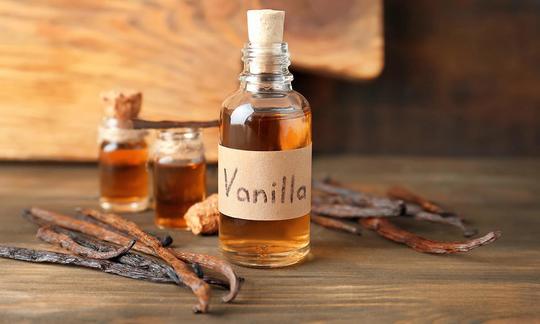

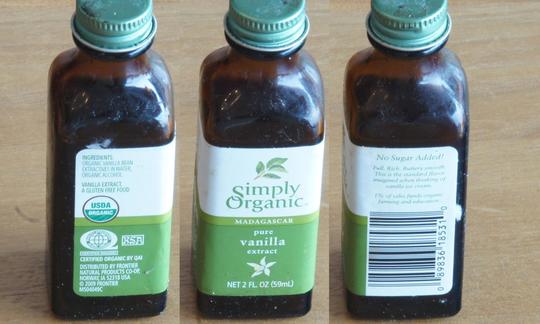

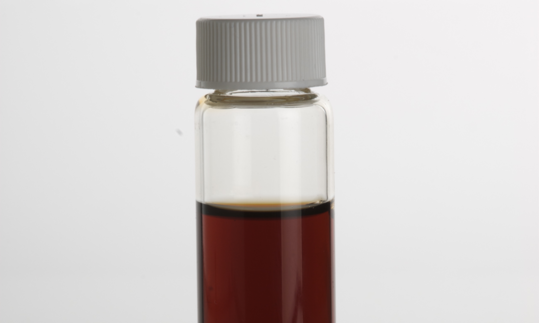

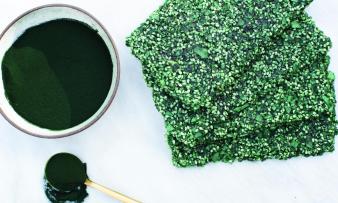
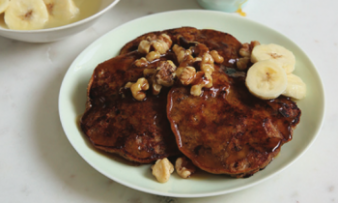
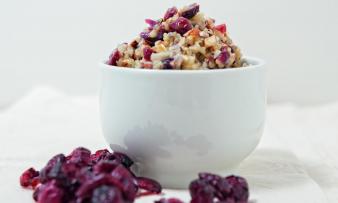


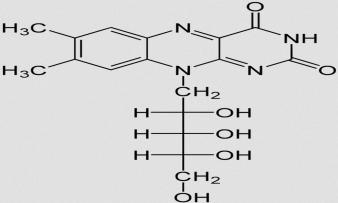


Comments